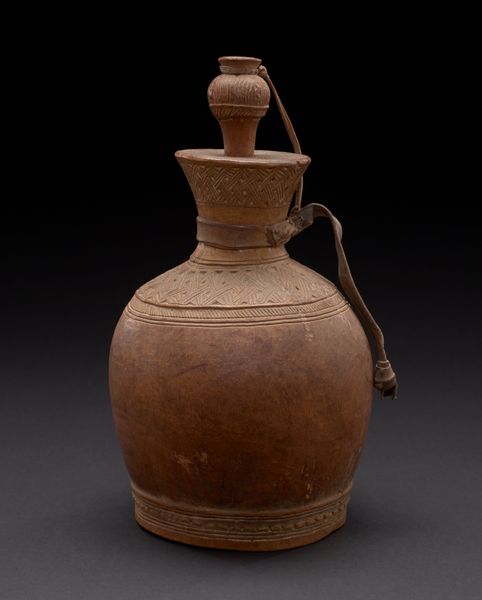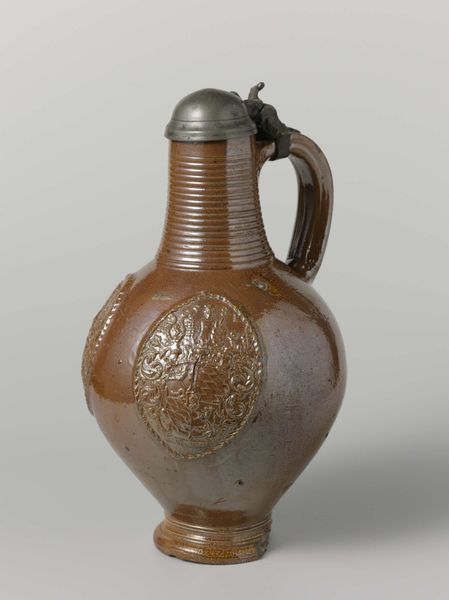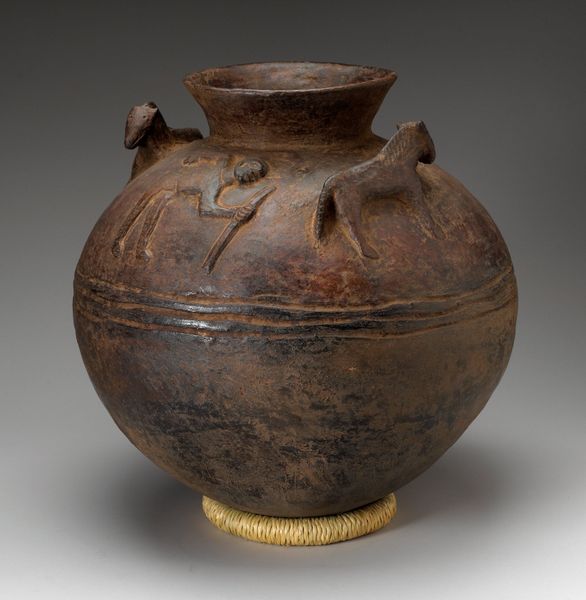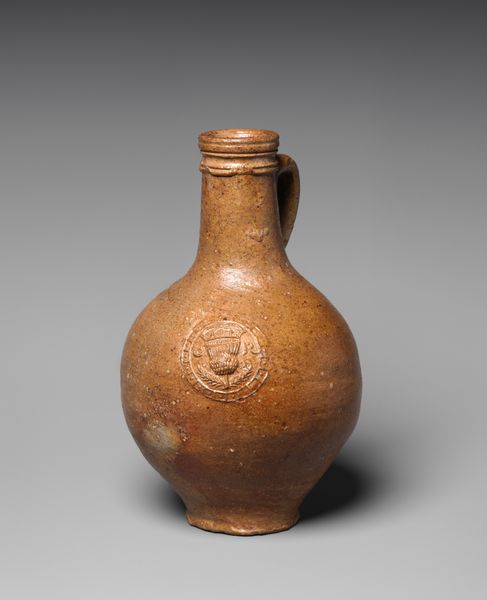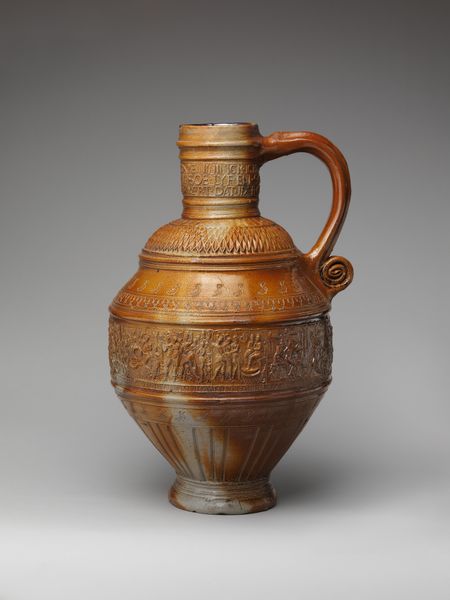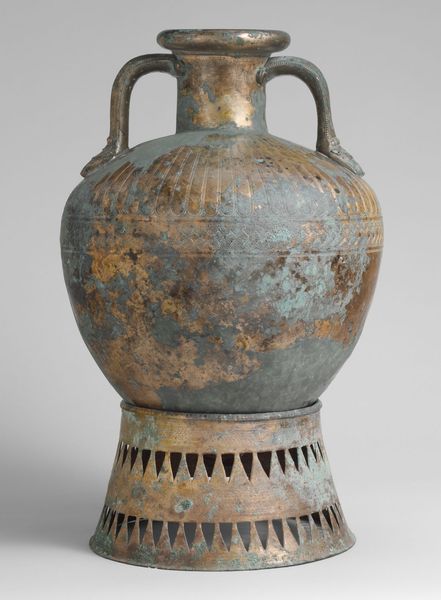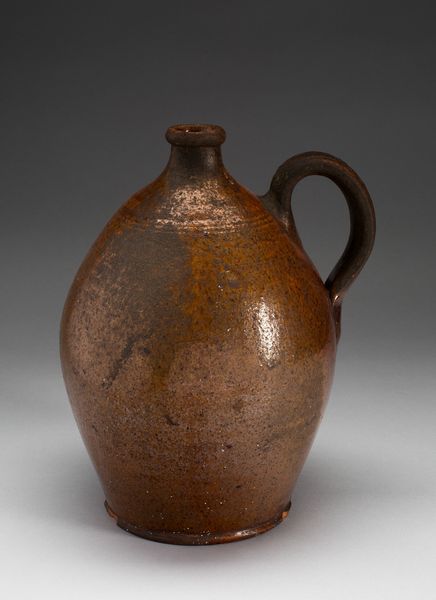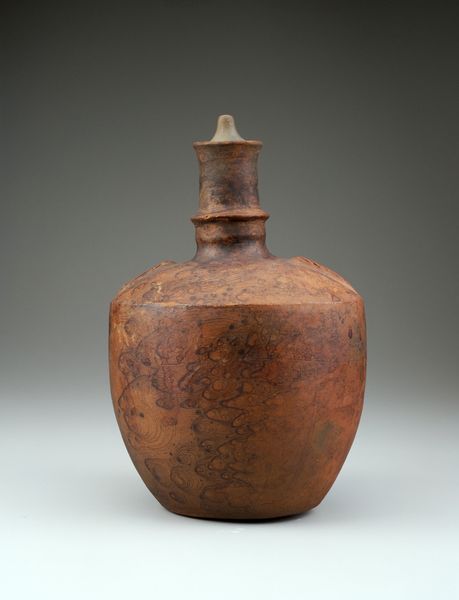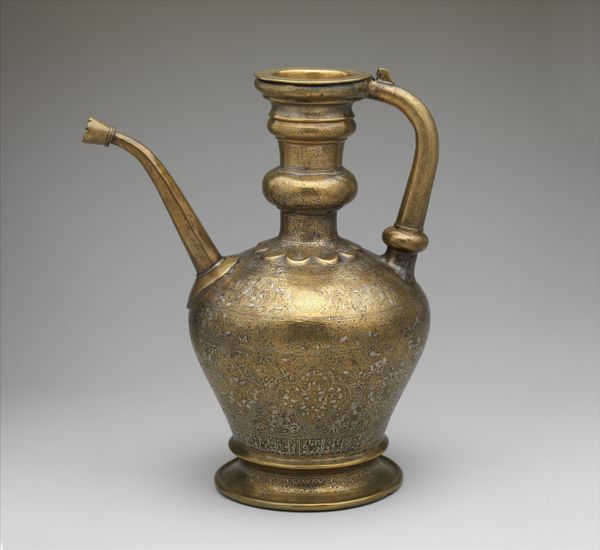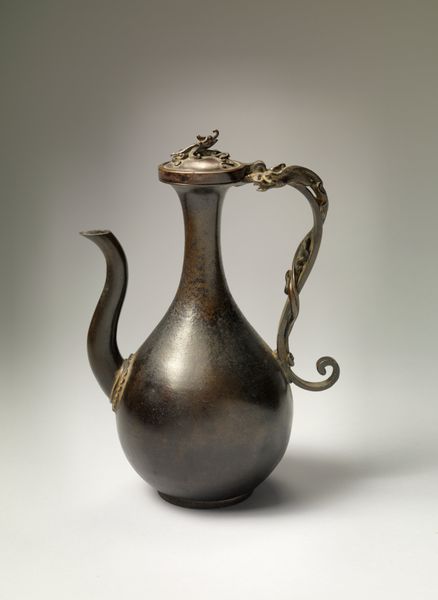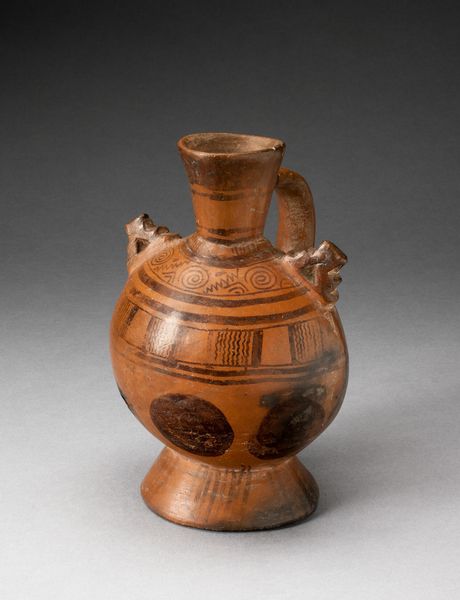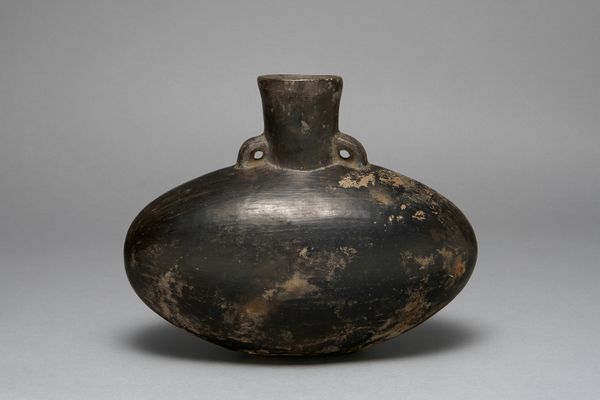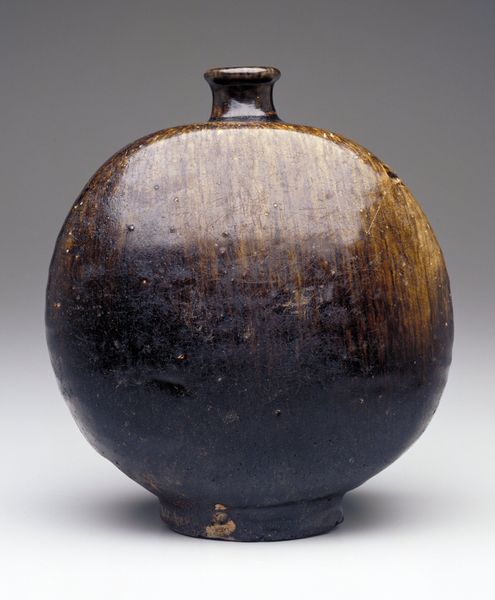
ceramic, earthenware
#
medieval
#
ceramic
#
earthenware
#
ceramic
Dimensions: 17 x 11 1/2 x 11 1/2 in. (43.18 x 29.2 x 29.21 cm)
Copyright: Public Domain
Curator: Oh, this jug… it has seen things. I feel like it belongs in a fairytale, nestled amongst forest gnomes and wise old owls. Editor: Let’s step back a moment. What we’re looking at is a salt-glazed stoneware jug with a pewter lid, likely produced in Germany around 1580. It’s part of the Minneapolis Institute of Art's collection. And yes, there is a fairy-tale element to it, but it’s important to see how objects like this reflect class, status and access to trade. Curator: Status, yes, but doesn't it have a cozy sort of presence? The color is like baked bread, warm. And those little medallion decorations seem almost playful, telling tiny stories. Editor: The "stories" are more deliberate assertions of power, wouldn't you say? Consider that the various coats-of-arms adorning it indicate not just individual identity but broader networks of patronage and control. It is very carefully constructed. Curator: I see your point, of course. And yet… I look at it and wonder if some weary traveler once drank from it. Imagining the hand that gripped it, the lips that touched it... Editor: Indeed. Access to vessels like these probably was regulated by the male gaze, but in any case it gives you a perfect starting point for thinking about consumption in the late 16th century. Who had access, who was excluded? Was the water or wine pure? Where had the ingredients come from? Curator: It is just… remarkable to think of its survival, of this object persisting through centuries of hands, uses, and stories. Editor: Right. These aren’t just aesthetic choices. These choices are deeply entangled with larger cultural and historical movements. The stoneware is solid, not easily broken – itself a signifier. That fact, juxtaposed with the anonymity of the maker, prompts another conversation for me. Curator: I think what this prompts is just that objects outlive us, and it invites you into that space to feel something, and to reflect. Editor: Yes, to sit with those contrasts and learn to hold them in dialogue – which, like this jug, may reveal something potent about a complex history.
Comments
No comments
Be the first to comment and join the conversation on the ultimate creative platform.
